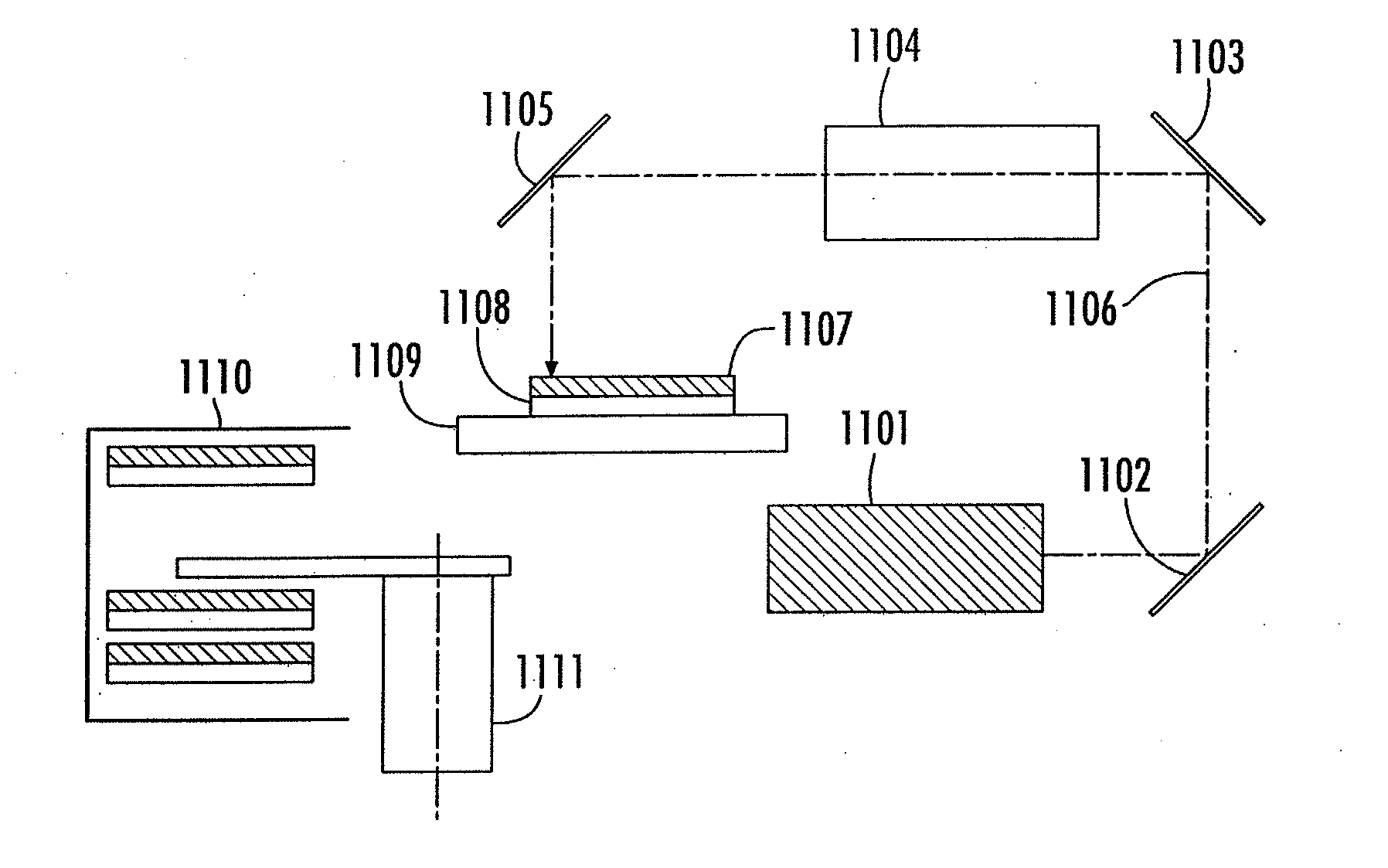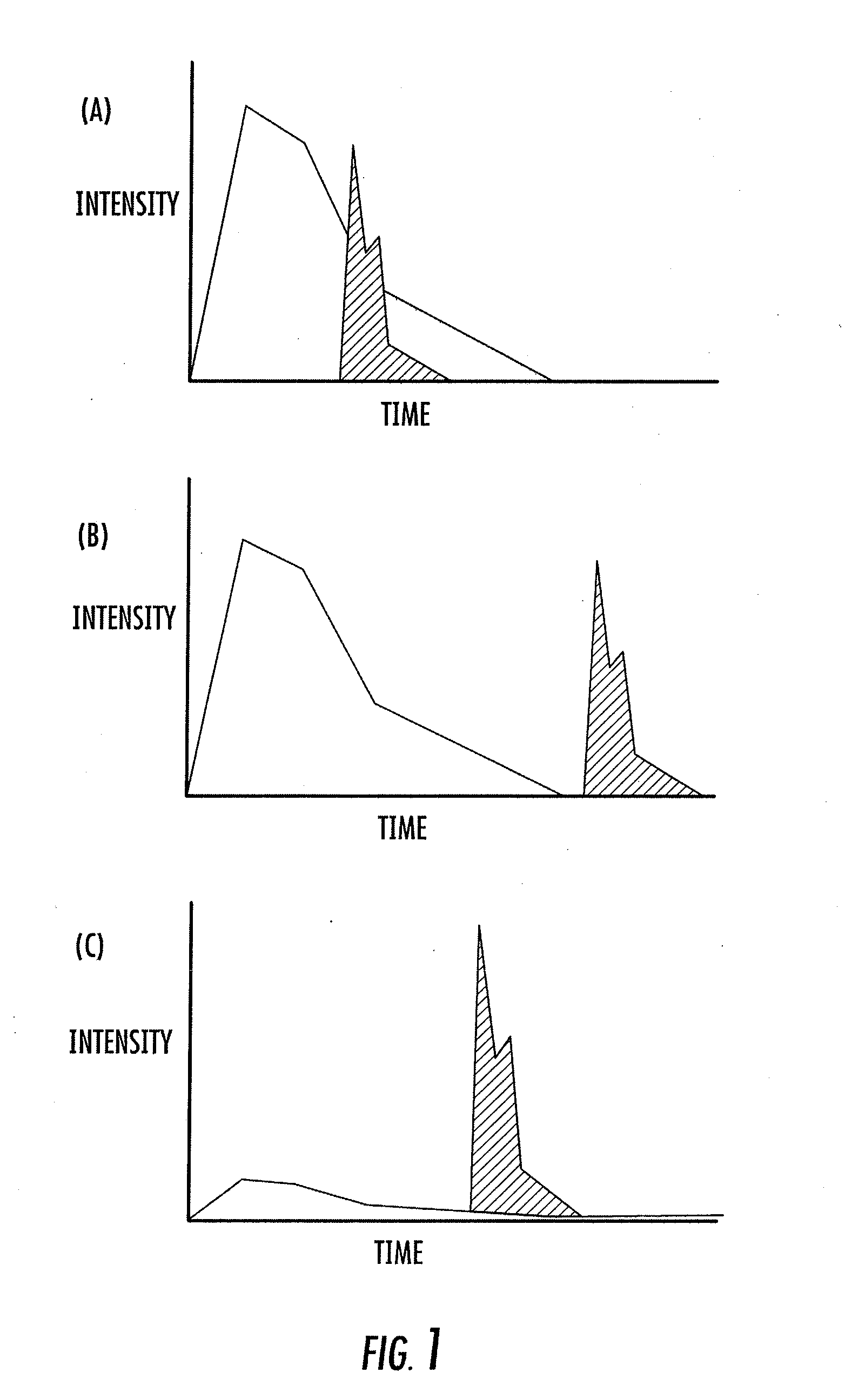Semiconductor thin film forming system
- Summary
- Abstract
- Description
- Claims
- Application Information
AI Technical Summary
Benefits of technology
Problems solved by technology
Method used
Image
Examples
Embodiment Construction
[0061]The embodiments of the invention will now be illustrated in detail with reference to the drawings.
[0062]FIG. 1 illustrates an example of the embodiment of the present invention. Each of the oscillation start timings is depicted as the abscissa axis while the irradiation energy (i.e., the intensity of pulse irradiation) is depicted as the region bound by the pulse line. FIG. 1(a) shows an example where a second pulse is irradiated with a delay to a first pulse laser. FIG. 1(b) shows an example where a second pulse is irradiated after the completion of the first pulse irradiation. Depending on the constitution of the laser apparatus, the time interval required between the supply of the trigger signal for controlling the oscillation and the actual start of the oscillation. Therefore, it is preferred to calculate and predetermine the “trigger oscillation” time in advance so as to control the irradiation to be started at the simultaneous timing. As compared with the second pulse, t...
PUM
| Property | Measurement | Unit |
|---|---|---|
| Density | aaaaa | aaaaa |
| Width | aaaaa | aaaaa |
| Irradiation dose | aaaaa | aaaaa |
Abstract
Description
Claims
Application Information
 Login to View More
Login to View More - R&D
- Intellectual Property
- Life Sciences
- Materials
- Tech Scout
- Unparalleled Data Quality
- Higher Quality Content
- 60% Fewer Hallucinations
Browse by: Latest US Patents, China's latest patents, Technical Efficacy Thesaurus, Application Domain, Technology Topic, Popular Technical Reports.
© 2025 PatSnap. All rights reserved.Legal|Privacy policy|Modern Slavery Act Transparency Statement|Sitemap|About US| Contact US: help@patsnap.com



